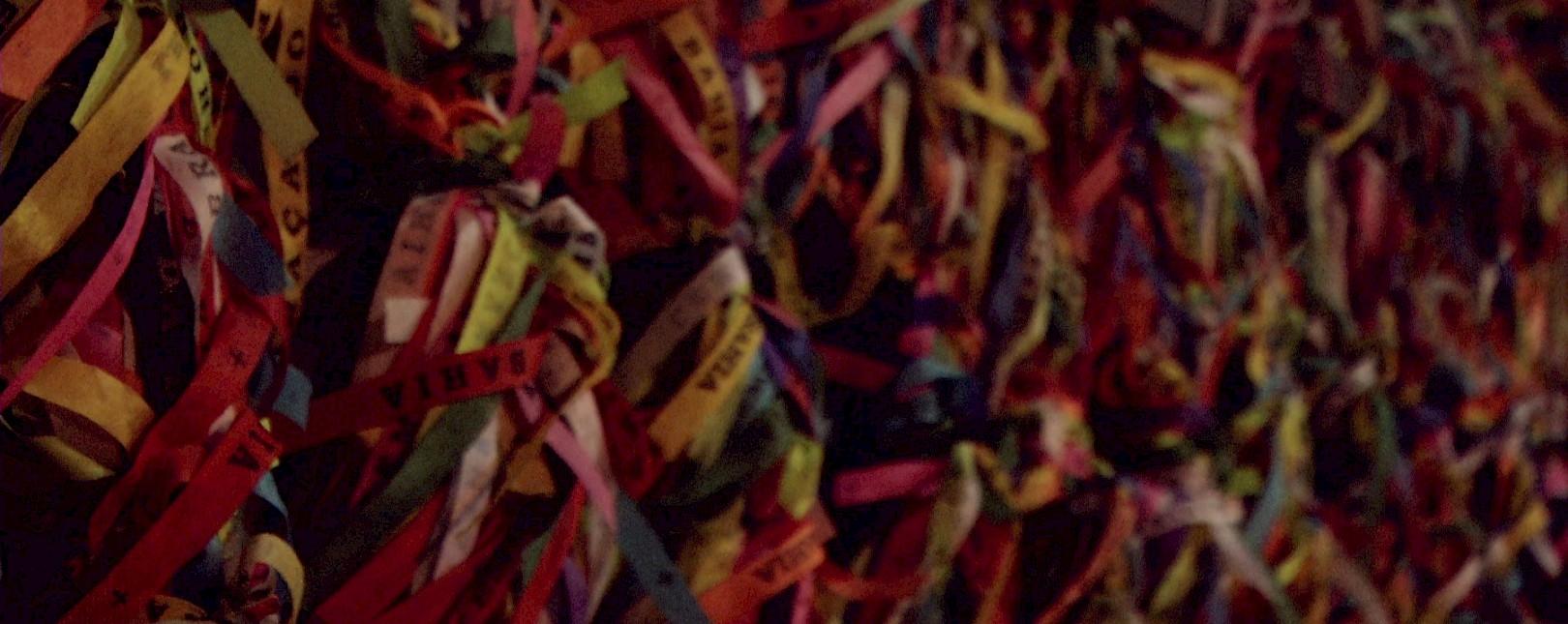Igreja Nossa Senhora do Rosário dos Pretos
12:12
Church of Our Lady of the Rosary of the Black Men of the Pelourinho. Syncretic mass. Catholicism. Candomblé. Afro Brazil. Brotherhood of Nossa Senhora do Rosário dos Homens Pretos. Salvador. Bahia. Built in the XVIII century.
The Church of Our Lady of the Rosary of Black People
Enslaved in Brazil, African people were not allowed to believe. Their faith was controlled because it was deemed too dangerous: once connected to their African beliefs, they were stronger and more creative than the current system would care for; if they were to partake in their lords’ cults, they would be forced to share spaces with the whites and that was… unthinkable.
“There will come a new day
A new sky
A new land
A new sea.”
Worship song in syncretic mass

But they had to survive past so many restrictions: inventive rehearsals were put in practice each day so they could imagine invisible dreams in which they were embraced by hope. Memories of Congo’s and mainly Angola’s Christianity surfaced as a creative repertoire for everyday life. Spontaneous artists were born: women and men collected seeds – called Our Lady’s Tears – from the ground to sew their own rosaries and, one by one, they sang the litanies coming from within the church.

During the 1600’s, they were already trying to join in the worship of this Lady of the Rosary. In the city of São Salvador da Bahia, black people gathered to observe mainly an altar located in a neighborhood called Sé. Over those years, the need to belong and grow made it so that African women and men alike organized in resistance and care groups: confraternities, brotherhoods and sisterhoods emerged as human architecture, places with imaginary walls of affection where they could meet with some safety.

In 1685, the Sisterhood of Our Lady of the Rosary was formed in Salvador with meetings at the side altars of chapels and convents: one of the most ancient black brotherhoods in Brazil. Seed after seed, their men joined forces and the money from their food stand sales around town. In 1704, they had enough money and were granted permission from local Catholic representatives to build their own church by the Portas do Carmo, one of the exits from Pelourinho’s steep streets, towards the convent with the same name. With few resources but a lot of will, the brothers had to donate their time to work on building the Church of Our Lady of the Rosary of Black People. The temple’s façade would be finished much later, in 1780.
“In the new land
There will be no chains for the black
And our native people
Will be seen as just that: people.”
Worship song in syncretic mass

Each ounce of energy invested in this place still echoes through it. Not only did they build the impossible walls to house their perseverance, but devout black people also built a bridge between Catholicism and Candomblé. The Rosary Mother’s image may be white, but Saint Benedict and Saint Ephigenia are black, as are a great deal of the rituals taking place in this temple where a viable black Roman Catholic identity is celebrated. It’s the Vatican, but it’s also Africa, and in Bahia.

Eyes gleam with tears, flooded by the sound of atabaques and gonguês, the instruments marking the beat of Maracatu and serving as a soundtrack to a priest’s sermon, a man with the Lord Jesus Christ. The necklaces made of cowry shells, beads crossing firmly against the chests, seem to proudly announce that the presence of Caboclos and Orixás is welcome at those grounds where feet, once freed from many chains, have stomped the land. For those who know the secrets of the exchange, overflowing hampers are also offered to the Holy Spirit. The Axé is in the dancing feet and bodies of their mothers dressed in white: they thought they were building a church, but these brothers in color laid down a route for human coexistence.

